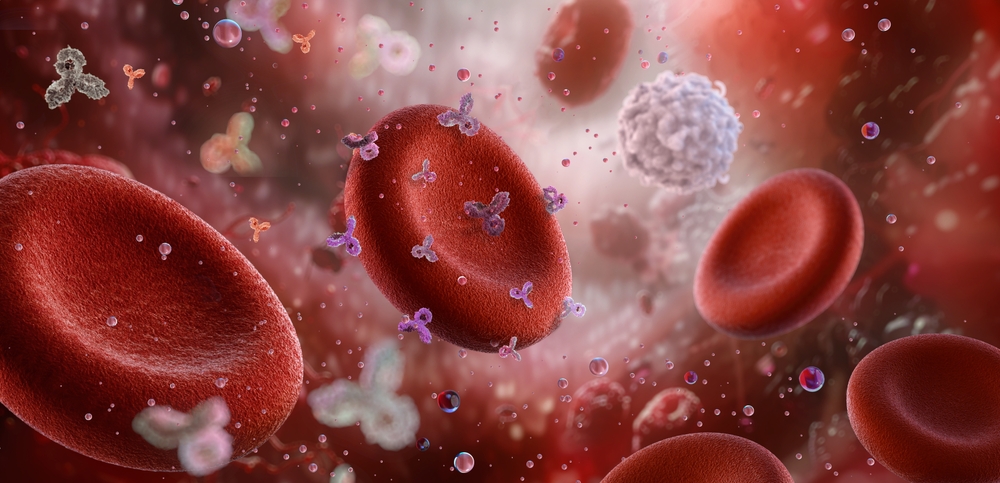Lack of Blood Type Diversity for Neanderthals May Have Led to Their Demise
This illustration does not describe early man blood types, but represents red blood cells in general. (Credit: Corona Borealis Studio/Shutterstock)NewsletterSign up for our email newsletter for the latest science newsWe can now track the spread of humanity by following a trail of bloodtypes.A group of researchers did just that, by analyzing genetic information from three groups of Early Man most recently Neanderthal and Homo sapiens (earlier work also included Denisovans, an extinct subspecies that roamed Asia until about 30,000 years ago).Although their analysis, which appears in Scientific Reports, stretches back about 120,000 years ago, it also offers some implications for current medicine and health. Different blood types confer different immune responses. Blood Type and HealthThe lack of variety in blood type within Neanderthals may have led them to their demise. While H. sapiens had wider diversity in blood types, which may have given them the immune system arsenal necessary to survive to present day.Nowadays, certain blood groups confer an advantage against pathogens such as cholera, malaria, one of the gastroenteritis viruses and, as we've seen recently, COVID, says Stphane Mazires, a geneticist at Aix-Marseille University in France who led the study. We can therefore imagine that the blood groups found in the first Sapiens may have equipped them with a new arsenal to face the new environments encountered as they spread across the world.To reach that conclusion, Mazires looked at previously sequenced genomes of three groups of Early Man: H. sapiens from 46,000 years to 16,500 years ago, Neanderthals from 120,000 years to 40,000 years ago, and a possible descendent of both Denisovans and Neanderthals from about 98,000 years ago. The DNA from these people came from throughout Eurasia.Blood Lines for Early ManThe results were both distinctive and compelling. The most striking pattern is that blood group gene diversity appears partitioned according to the hominid lineages, according to the paper. That partition by blood type was striking.The Late Neandertals showed surprisingly little change over 80,000 years. They also had less diverse blood types than either early H. sapiens or current humans. Two of the blood groups can still be found almost exclusively in modern people from Sub-Saharan Africa. We showed that all Neandertal shared the same blood group profile, says Mazires. Such low diversity is the signal of small populations.The oldest H. sapiens genomes, on the other hand, showed both more changes and diversity. Some of the genetic information related to blood type in that group is missing from both Neanderthal and Denisova genomes. Evidence for some of those specific blood types can now be found only in non-African populations.We showed that when entering Eurasia, they were carrying distinct blood types from Neanderthal, says Mazires. That means that the present-day geography of the blood groups in Eurasia originates from the Out of Africa of Sapiens.How Does This Impact Humans Today?So, what are the implications for current humans? They are two-fold, says Mazires. First, the study shows how different blood types can help fight against infectious disease. Second, it emphasizes the importance of monitoring blood during both transfusions and pregnancies. The presence of some rare subtypes that originated with the Neanderthals but outlived them can lead to complications.Article SourcesOur writers at Discovermagazine.com use peer-reviewed studies and high-quality sources for our articles, and our editors review for scientific accuracy and editorial standards. Review the sources used below for this article:Scientific Reports. Rapid Change in Red Cell Blood Group Systems After the Main Out of Africa of Homo Sapiens Before joining Discover Magazine, Paul Smaglik spent over 20 years as a science journalist, specializing in U.S. life science policy and global scientific career issues. He began his career in newspapers, but switched to scientific magazines. His work has appeared in publications including Science News, Science, Nature, and Scientific American.1 free article leftWant More? Get unlimited access for as low as $1.99/monthSubscribeAlready a subscriber?Register or Log In1 free articleSubscribeWant more?Keep reading for as low as $1.99!SubscribeAlready a subscriber?Register or Log In


